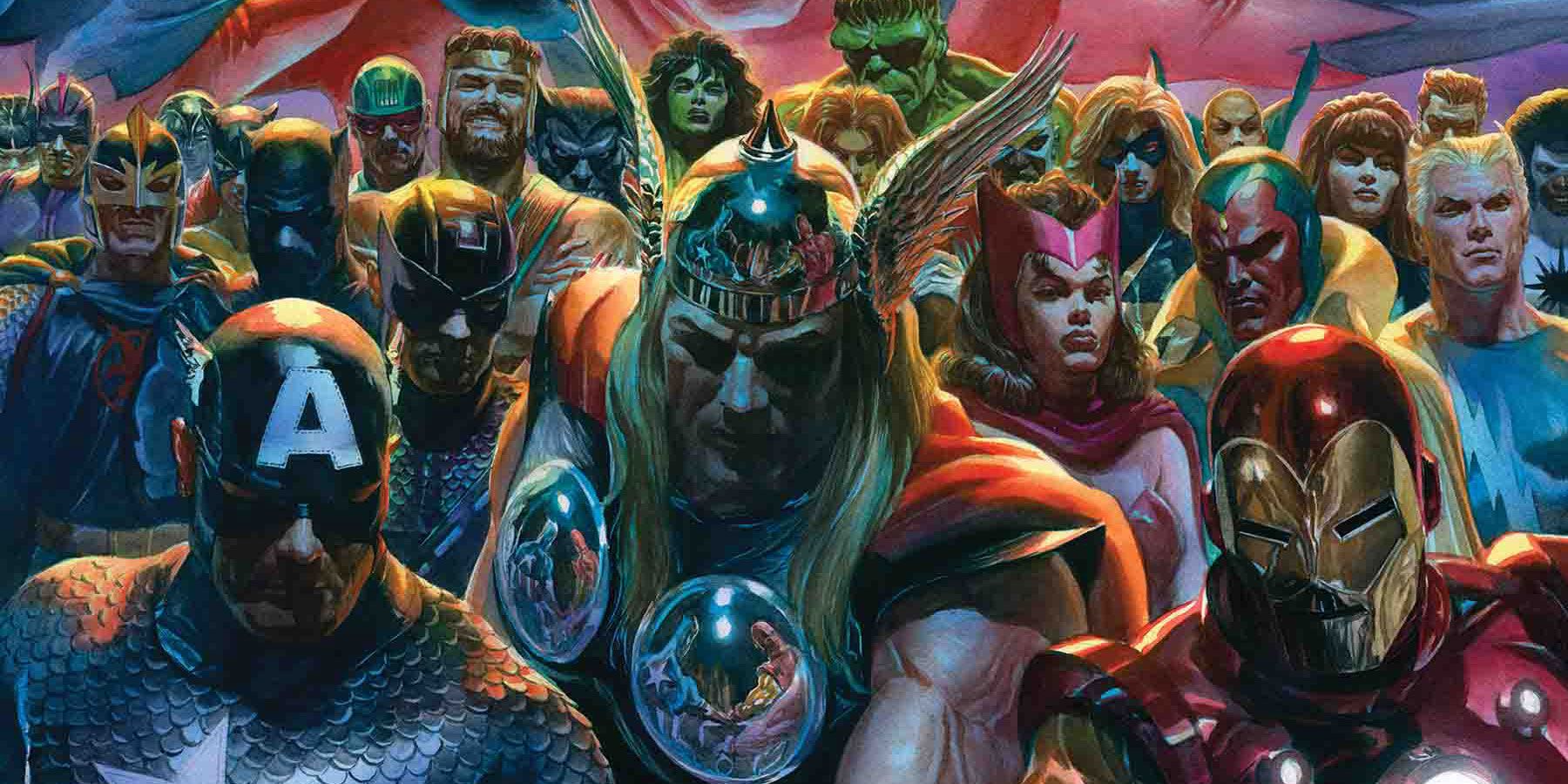Alex Ross' photorealistic paintings have graced the covers and interior pages of countless comic books since the 1990s. Saturday, at New York Comic Con, Ross not only reflected on his past work but on his and Chip Kidd's Marvelocity, which celebrates such popular Marvel heroes as Spider-Man, Iron Man, Captain America and the Fantastic Four.
Kidd kicked things off by asking Ross when he’s happiest. Ross responded by saying he’s happiest when he’s done with all his work, which prompted Kidd to ask when he knows a painting is done.
“It’s always throwing dice,” Ross said. “It’s all just kind of, every piece is different. Every piece can wind up any way it wants to.”
“I have time built into my schedule so I can manage as much work as I’ve got,” Ross said about his workload. “If you’ve worked on something over the course of a few days, you get a blindness over what it looks like, so if you can avoid packing it up and get a second set of eyes on it, or put it aside and come back to it, I can understand it in a way a reader might see it.”
Speaking about superhero comic book art, he explained how he admires the work of Jose Luis Garcia Lopez, and noted that “there’s a lot to say to defend the medium of superheroes, and a lot to say to criticize it, as well.”
“The normals, we’ll call them, see us as a freak show,” Ross added. “There’s something about the magic of the genre of comics and superheroes that’s a combination of everything in life. Superman is a mash up of fantasy, science fiction, mythology. And what’s his job? He’s a journalist. There’s a whole level of entertainment there. Those are a whole bunch of genres ganged up in one character, and it works, and that’s the brilliance of how comics work. It’s our world, with our culture.”
Kidd then asked Ross which superhero he’d most like to wake up next to.
“Shazam?” Ross joked, clarifying that he means the wizard and not Captain Marvel. “No, I honestly don’t have some on-deck answer to that. They’re not sexual beings to me – they’re concepts.”
“When I think of classic Wonder Woman, if you say she’s just wearing a bikini, that doesn’t make sense,” Ross added. “Her skin is her armor, there’s nothing sexualized about her. Of course, there’s artwork that presents her in a sexualized context, but most of her representation has a simple purity. I think of her costume color as being peach, much like I don’t think of Namor wearing a pair of Speedos. He’s just the peach-colored guy.”
Commenting on the relationship between Stan Lee and Jack Kirby, Ross said, “Whereas [Marvel] understood how irreplaceable Jack was, they weren’t giving him more credit as time went on. That’s something I’m sure Jack felt like Stan could have done more to fight that for him, and I’m sure that was a point of contention. They seemed to be a good pair in the ‘60s, but they rarely saw each other. Jack worked from home and sent in his pages.”
Regarding superhero films, Ross noted that making things more serious and dark, both aesthetically and tonally, can work on-screen, but can also make things dull when translated into the comics.
Kidd then asked Ross to speak about his work with Marvel and Marvelocity.
“Well, I love to have an association to the Marvel characters,” he said. “Marvel, once they emerged with the Marvel Universe in the ‘60s, they pretty much became the sales leader and never stopped. I mean, look at how well the films have done. There’s always been a sense with DC that you need to fix it. With Marvel, it’s more or less, I just have to paint those characters and people love them. Generally, people just accept them as the ‘cool’ characters.”

